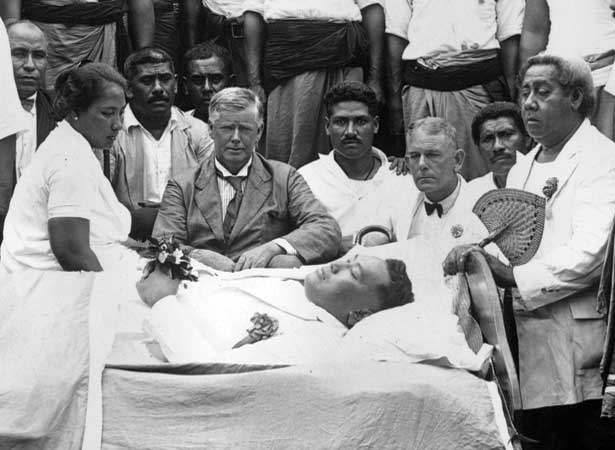
New Zealand military police fired on Mau independence demonstrators in Apia, killing 11 Samoans, including the independence leader Tupua Tamasese Lealofi III.
After the First World War, the League of Nations granted New Zealand a mandate to administer Western Samoa, a former German colony (see 29 August). The undermining of Samoan culture by New Zealand authorities, and their inept handling of the 1918 flu epidemic, which killed 8500 Samoans, led to the rise of an independence movement – the Mau.
In 1929 the Administrator of Western Samoa, Colonel Sir Stephen Allen, decided to crack down on mounting civil disobedience. When the Mau paraded through Apia in December, he ordered police to arrest one of their leaders. Violent clashes broke out and 11 Samoans and one policeman were killed. Mau supporters disappeared into the bush. They came out of hiding in March 1930 and agreed to disperse.
Some closure regarding this dark phase of Samoan history occurred in 2002, when New Zealand Prime Minister Helen Clark apologised for wrongs committed by the colonial administration.
Read more on NZHistory
Influenza hits Samoa – The 1918 influenza pandemicBlack Saturday – New Zealand in Samoa1929 - key events – The 1920sSamoan 'invasion' Great War Story – Capture of German Samoa
External links
How to cite this page
''Black Saturday' in Samoa', URL: https://nzhistory.govt.nz/black-saturday-nz-police-open-fire-on-mau-protestors-in-apia-nine-samoans-killed, (Ministry for Culture and Heritage), updated 23-Sep-2020
